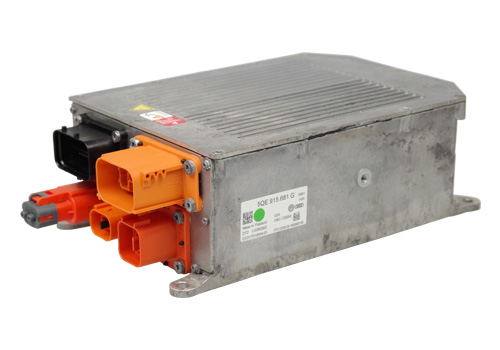What is an onboard charger in an electric vehicle (EV)?
In the ever-evolving landscape of electric vehicles (EVs), understanding the intricate components that power these eco-friendly marvels is crucial. One of these components is the onboard charger. As an integral part of an electric vehicle's charging system, the onboard charger plays a pivotal role in ensuring efficient energy transfer from the grid to your EV's battery.
In this blog, we'll delve into the world of onboard chargers, exploring their functions, significance, and the crucial role they play in the electrified future.

Defining the onboard charger
Simply put, an onboard charger is an essential component within an electric vehicle that manages the process of converting alternating current (AC) from an external power source, typically a charging station, into direct current (DC) to charge the vehicle's battery. This conversion is essential because most electric vehicles operate on DC power, making the onboard charger a critical intermediary in the charging process.
The core functions:
The primary function of an onboard charger is to ensure that the electric energy supplied from an external source aligns with the specifications required by the vehicle's battery. Here's a breakdown of its core functions:
AC to DC conversion
When you plug your electric vehicle into a charging station, the onboard charger initiates the process of converting the incoming AC power into DC power suitable for the battery.
Voltage regulation
Onboard chargers play a crucial role in regulating the voltage to match the specific requirements of the vehicle's battery. This ensures that the charging process is optimised and safe.
Charging speed control
The onboard charger also manages the charging speed, allowing for variations depending on the state of charge, battery temperature, and other factors. This helps in prolonging battery life and ensuring efficient charging.
Different types of onboard chargers
Single-phase onboard chargers
Commonly found in residential charging setups, single-phase onboard chargers operate on a standard household electrical system with a 120V or 240V AC power source. While these chargers are slower compared to their three-phase counterparts, they are ideal for overnight charging at home.
Three-phase onboard chargers:
Designed for commercial charging stations and higher-power applications, three-phase onboard chargers tap into a more robust electrical infrastructure. They can handle higher voltages and deliver faster charging speeds, making them suitable for public charging stations and certain EV models with larger battery capacities.
Bidirectional onboard chargers:
Bidirectional chargers, also known as vehicle-to-grid (V2G) chargers, offer a two-way flow of electricity. In addition to charging the vehicle, these chargers allow the EV to discharge energy back to the grid when needed. This bidirectional capability holds promise for grid stabilisation and energy storage solutions.
Fast AC onboard chargers
Leveraging advanced power electronics, fast AC onboard chargers aim to reduce charging times significantly. These chargers are instrumental in enhancing the charging experience for EV owners, particularly when using Level 2 charging stations.
DC onboard chargers
In certain electric vehicles, especially those designed for fast-charging infrastructure, onboard DC chargers play a pivotal role. These chargers directly convert incoming DC power from fast-charging stations, bypassing the need for an external AC-DC converter. This results in quicker charging times, making them suitable for long-distance travel.
The road ahead is electric
The world of onboard chargers in electric vehicles is as diverse as it is crucial to the overall EV experience. Understanding the distinctions among different chargers is vital for both electric vehicle enthusiasts and industry stakeholders, because it appears as if EVs will dominate the car industry.
As the electric vehicle market continues to burgeon, the role of onboard chargers becomes increasingly significant. These chargers are not just functional components; they represent the heartbeat of electric mobility, dictating the speed, efficiency, and adaptability of EVs in our everyday lives.
Embracing the nuanced world of onboard chargers ensures that the journey towards a sustainable and electrified future is not only smooth but also laden with possibilities for continued growth and evolution. Whether you own an EV or want to begin working on EVs, the varied landscape of onboard chargers paves the way for a dynamic and exciting future in electric mobility.
We provide remanufacturing services for different onboard chargers, check out our list here to see if we can help you. If you’re a private individual looking for ACTRONICS’ remanufacturing service, check out our Service Points page to find your nearest ACTRONICS-approved mechanic.

 da
da de
de es
es fr
fr it
it nb
nb nl
nl pt
pt sv
sv fi
fi